Florida- Georgia National Park trip
10/24/23-10/25/23
I was off on another solo trip, this time from Florida through Georgia, and eventually to Nashville to meet up with some girlfriends. I left with a plan to stop at several of the National Parks along the way, and up first was in the tiny town of Plains, Georgia. This is the home of President James Carter and where he grew up, met and married his wife Rosalyn and the site of the Jimmy Carter National Historical Park.
Jimmy Carter National Historical Park
My first stop was at the parks visitor center. Here is the Plains High School. This is the original High School of Plains. Through out the building there is information about Jimmy Carter as well as several exhibits of this historic building including a classroom, the principals office and auditorium.

There was information about how the school had taken steps towards dealing with segregation and integration.

I watched a film on the life of Jimmy Carter in the old auditorium.

Jimmy Carter was our 39th President serving from 1977 to 1981. My very democratic family was thrilled, I do recall Jimmy Carter as the first president I was aware of, and I even wanted to be Amy, his daughter who was a few years older then I was at the time. I even had the same hair. (by chance).
Carter is considered a below average president by historians, but others would say that this was a result of what was going on in the world. Some of his accomplishments are specific to foreign affairs. The Camp David Accords, was an agreement between Egypt and Israel leading to a peace treaty between the two nations. The meetings were held at Camp David (thus the name). This was important because it showed that nations with disagreements could come together and resolve in peace. He is also remembered for the Panama Canal Treaties, or the Torrijos-Carter Treaties. The treaty created neutrality in the Panama Canal zone opening passage to all countries. Full control of the canal was eventually given to Panama in the year 2000. He also aided in creating relations with China.
Carter was a strong believer and supporter of human rights, he pushed for policy with the emphasis on human value and ending racial discrimination.
Some challenges Carter faced, was the woes of inflation, the energy crisis, high unemployment, and eventually dealing with the release of 52 American hostages in Iran.
Carters attempts to address the concerns were failed. Carter attempted to delt with the energy shortage by proposing the National Energy policy, which was rejected by congress. He additionally attempted to cut governmental spending, but prices continued to rise. Attempts to free the hostages also failed.
Unemployment, a bad economy, and the Iranian invasion of the US embassy (the capture of 52 hostages) created questions if Carter had the skills to remain president for a 2nd term.
Carter did not win a 2nd term. He was replaced with Ronald Regan. Interestingly enough, the hostages were released moments after Regan was sworn into office. (HUM.....)
I'm going backwards on Carter's history here a little bit, because I viewed the museum backwards. We knew him as president, but how he got there is pretty interesting too.
Jimmy and Rosalyn were the longest married presidential couple. This year marked their 77th wedding anniversary.
Jimmy met Rosalyn in 1945. He was attending school at the United States Navel Academy at the time, she was attending college at Georgia Southwest College. Although they had known of each other all their lives having both lived in Plains, it was that summer when the attraction ignited. Jimmy was introduced to Rosalyn by his sister and impulsively asked her to the movies.


Their relationship moved quickly from there and they were married a year later (1946) in Plains.
The couple spent many of their early years moving as Jimmy's navel career had him deployed.
In 1953, Jimmy's father passed away. It was Jimmy's desire to return back to Plains, retire from the Navy and work on the family peanut farm. Rosalyn was not happy about this. However, they returned, and both began to find a niche within the community they had grown up in.
In 1962, Jimmy won a Georgia State Senate, and in 1970 he campaigned for Congress and Governor. He won. In 1976, as we already know, he ran for President and won that as well.
Before I left the visitor center, I got my unigrid, added my passport stamps and picked up a magnet. Then I was off to the recommended next stops. Using the park map, I located the house that young Rosalyn grew up in. (although this is a private residence and not part of the National Park System). I also went past the Carters current home, but the home is far off the main road and surrounded by bushes, So I just waved hello and headed into town.
Before I left the visitor center, I got my unigrid, added my passport stamps and picked up a magnet. Then I was off to the recommended next stops. Using the park map, I located the house that young Rosalyn grew up in. (although this is a private residence and not part of the National Park System). I also went past the Carters current home, but the home is far off the main road and surrounded by bushes, So I just waved hello and headed into town.
Quick little history of young Rosalyn. Born in 1927 , Eleanor Rosalynn Smith. She was the eldest of four children. Her family lived in poverty, but as she would report, she never knew, because everyone was living in poverty. Her father passed away when she was 13. Rosalyn was then responsible to raise her younger siblings as well as help her in her mothers dress making business to help in the family finances. Despite these demands Rosalyn worked hard in school, and graduated as the Valedictorian of the Plains High School. As noted she later went on to attend the Georgia State College for Women.
Once in town, I stopped at the famous make shift campaign office, train station.
Once in town, I stopped at the famous make shift campaign office, train station.
Unfortunately the building was not open for this visit, but I was glad I stopped. Plains Georgia is super cute, but its in the middle of absolutely nowhere.

Here are a few pictures of the home that I was able to get.
Jimmy's ancestors had property in the area since the 1630's and Earl, his father owned and run this peanut farm, a warehouse and a store while Jimmy grew up here. The family was doing well by American standards, but wealthy by Georgia standards.

Earl was a businessman, his wife, Jimmy's mother Lillian was a nurse before having Jimmy and was known to assist the African American women on health care needs as the children grew up. At the time, this was not in compliance of the race relations in the South. Jimmy was born in1924. He was the first president in the white house to actually be born in a hospital, and the first born to Earl and Lillian. Three more children would bless the Carter's house hold, two girls and a boy. The whole family worked hard, and even a a young child Jimmy was working at the Family store.
I then traveled to Jimmy's boyhood farm.
Unfortunately the house was closed on my visit, but the farm was still accessible, as was the family store.

Here are a few pictures of the home that I was able to get.
Jimmy's ancestors had property in the area since the 1630's and Earl, his father owned and run this peanut farm, a warehouse and a store while Jimmy grew up here. The family was doing well by American standards, but wealthy by Georgia standards.

Earl was a businessman, his wife, Jimmy's mother Lillian was a nurse before having Jimmy and was known to assist the African American women on health care needs as the children grew up. At the time, this was not in compliance of the race relations in the South. Jimmy was born in1924. He was the first president in the white house to actually be born in a hospital, and the first born to Earl and Lillian. Three more children would bless the Carter's house hold, two girls and a boy. The whole family worked hard, and even a a young child Jimmy was working at the Family store.
There is a unique opportunity to listen to Jimmy Carter himself tell about what life was like here on the farm.
He worked hard, saved money and when he was 13 years old. (Yes, 13) he purchased 5 homes in the area during the Great Depression, at deep discount prices. The homes were rented to local families.
Like his wife, Jimmy graduated the Valedictorian of his graduating class, (11th grade) and went to the Navel Academy.
Like his wife, Jimmy graduated the Valedictorian of his graduating class, (11th grade) and went to the Navel Academy.
Although Jimmy Carter was considered a less then average president, what he did after his presidency is possibly where he made the most changes in society. He and Rosalyn dedicated themselves to the rights of others. They established the Carter Center, with a mission to include a fundamental commitment to human rights and the alleviation of human suffering. They were also heavily involved with the Habitat for Humanity project helping to provide affordable homes to people in need. Even at 95 years old, he was still showing up to volunteer to help build a house. While Jimmy continued to provide advocacy in global affairs and write several books, Rosalyn used her influence to assist in reducing stigma around mental health. Jimmy was awarded the Nobel Peace Prize in 2002 for his efforts to find a peaceful solution to international conflict. The couple continue to live in Plains Georgia to this day.
Eleanor Rosalynn Carter passed away about a month after this visit on November 19th 2023 she was 96 years old.
James Earl Carter died on December 24th 2024 at 100 years old.
How cool to learn about this family and the President.
I drove a bit further North and stopped at Andersonville National National Historic Site.
I had no idea what I was walking into.
Andersonville National Historical Park and the National Prisoner of War Museum.
This National Park site Andersonville (or Camp Sumter officially) was where the largest military prison was established during the Civil War. Over 45,000 Union prisoners were detained here.
Andersonville National Historical Park and the National Prisoner of War Museum.
This National Park site Andersonville (or Camp Sumter officially) was where the largest military prison was established during the Civil War. Over 45,000 Union prisoners were detained here.
It was a horrible place. It was overcrowded, located in an open air stockade that was enclosed by a 15 foot wall. Just within the wall was a designated "deadline" ,located approximately 19 feet from the stockade wall. If a prisoner should cross the "deadline", they were shot.
The water supply was polluted by sewage and waste. There was very little food, and no shelter. Over 13,000 Union Soldiers died at Andersonville over the 14 months of its existence. I had not done any research on the place, so I was completely taken back by what this site represented in our history.
Additionally the site houses the National Prisoner of War Museum. Another thing I was not prepared for.
I started inside and explored the POW museum.

Treatment of the American POW during the Korean war considered inhumane; torture, and brutal force was presented often to these men.
The museum was well done, offering several different POW captives over the many Wars our nations have engaged in.
In WWII Germany had harsh treatment of the Soviet. Millions would die in captivity.
POW walking to their imprisonment. POW in the Vietnam war was also considered inhumane and brutal. Many felt their death was imminent.
I think of movies like the Dear Hunter, Unbroken and The Empire of the Sun. Its easy to watch a movie and think that this is just for the dramatics, but when you realize that it is real, it does take you a moment to consider the reality of circumstances.
There were two films offered at this museum, one called Echo's of Captivity which featured the POW thoughout American History, and the other Voices of Andersonville featured the POW's held hear during the Civil War.
WAR is over!
I did watch the Andersonville film before I went into the recreated encampment.
Early in the War, prisoner's were often exchanged. However, there was a breakdown in this policy after the Emancipation Proclamation. Confederates were unwilling to treat Black soldiers as free men and refused to exchange these men. The confederate congress passed the Retaliatory Act. This Act declared that Black POW would be handed over to the state for re-sale into slavery. Additionally, President Lincoln recognized that The Confederacy was struggling to maintain manpower and exchange only offered an opportunity for these men to return to battle. Thus Prisoner of War Camps were built.
Andersonville was considered one of the worst prisons. It was on these grounds that thousands of men would live in filth, eat very little, bake in the hot Georgia sun, have unsanitary water, many were covered in filth, lice their bodies often riddled with infections. Most who died here died of malnutrition (Scurvy) or parasitic infections within the gut from unsanitary water. Disease was so rampant that at the camps height of prisoners there were 100 deaths a day from such sickness. If the disease didn't kill you and you were able to stay free of the deadline, there were fellow prisoners known as Camp Raiders who who take any of your precious belongings, your food and resistance would bring defeat.
I started inside and explored the POW museum.

Treatment of the American POW during the Korean war considered inhumane; torture, and brutal force was presented often to these men.
The museum was well done, offering several different POW captives over the many Wars our nations have engaged in.
In WWII Germany had harsh treatment of the Soviet. Millions would die in captivity.
POW walking to their imprisonment. POW in the Vietnam war was also considered inhumane and brutal. Many felt their death was imminent.
I think of movies like the Dear Hunter, Unbroken and The Empire of the Sun. Its easy to watch a movie and think that this is just for the dramatics, but when you realize that it is real, it does take you a moment to consider the reality of circumstances.
There were two films offered at this museum, one called Echo's of Captivity which featured the POW thoughout American History, and the other Voices of Andersonville featured the POW's held hear during the Civil War.
Here are a few examples of the encampment.
WAR is over!
I did watch the Andersonville film before I went into the recreated encampment.
Early in the War, prisoner's were often exchanged. However, there was a breakdown in this policy after the Emancipation Proclamation. Confederates were unwilling to treat Black soldiers as free men and refused to exchange these men. The confederate congress passed the Retaliatory Act. This Act declared that Black POW would be handed over to the state for re-sale into slavery. Additionally, President Lincoln recognized that The Confederacy was struggling to maintain manpower and exchange only offered an opportunity for these men to return to battle. Thus Prisoner of War Camps were built.
Andersonville was considered one of the worst prisons. It was on these grounds that thousands of men would live in filth, eat very little, bake in the hot Georgia sun, have unsanitary water, many were covered in filth, lice their bodies often riddled with infections. Most who died here died of malnutrition (Scurvy) or parasitic infections within the gut from unsanitary water. Disease was so rampant that at the camps height of prisoners there were 100 deaths a day from such sickness. If the disease didn't kill you and you were able to stay free of the deadline, there were fellow prisoners known as Camp Raiders who who take any of your precious belongings, your food and resistance would bring defeat.
Below is the making of the Deadline, an area if crossed would insure immediate death as you were shot.
Below is an example of the shelters the POW made. The facility had no shelter for these men, they were left to the elements that presented within this open field. Any supplies were scavenged. Some would gather sticks or brush found within the camp. Others would dig pits within the ground. These make shift shelters were called shebags. The men were left to themselves to figure it out.
The stockade wall reaching heights of 17 feet.
These roosts above the ground were called pigeon roosts. This was where the guards would stand and be ready should there be a crossing over the dead zone.
Andersons only water source was from a stream that flowed through the camp. It was used for bathing, toileting, and laundry. Anyone who dared to drink from this stream was assured a quick but painful death. The only source of drinking water was from the rain. Rain itself caused it's own problems as the camps would become flooded, muddy, and there would be an increase mosquitos and ticks.
Below is an example of the shelters the POW made. The facility had no shelter for these men, they were left to the elements that presented within this open field. Any supplies were scavenged. Some would gather sticks or brush found within the camp. Others would dig pits within the ground. These make shift shelters were called shebags. The men were left to themselves to figure it out.
The stockade wall reaching heights of 17 feet.
These roosts above the ground were called pigeon roosts. This was where the guards would stand and be ready should there be a crossing over the dead zone.
Andersons only water source was from a stream that flowed through the camp. It was used for bathing, toileting, and laundry. Anyone who dared to drink from this stream was assured a quick but painful death. The only source of drinking water was from the rain. Rain itself caused it's own problems as the camps would become flooded, muddy, and there would be an increase mosquitos and ticks.
In August of 1864 as if God had taken pity of these dying men, a spring suddenly appeared flowing with fresh clean drinking water.
Below is the Providence Spring house that was constructed in 1901 as a reminder of the divine miracle that the spring had provided, perhaps the difference between life or death for many of these men.
This is North Gate. This was where newly arriving prisoners would enter the camp.
Once enclosed between the big gates, the prisoners were divided into groups, and stripped of their valuables.
Here is what is left of the spring that ran through the camp.
Hey, I found an armadillo.
After my tour of the camp, I made my way to the cemetery. Here are the graves of nearly 13,000 Union Soldiers. The Andersonville National Cemetery was established to honor those who had died as members of our country's military.
These men were buried shoulder to shoulder.
This is such a sacred place. I pondered the courage and strength of these men who sacrificed so much. As I reflect on this experience, I must also give God his grace for allowing me, my family and my friends to have never had to live during a time with such pain and loss.
Day 2
I wasn't to far from my next stop, although I was a little worried about driving in the area. Driving in big cities are not fun. However, I was thankful that getting around Atlanta was not as difficult as I had expected. I did almost get run over by a Trolly, but I was able to back up and get out of the way. Trolly's are not like cars, they go where they go and you have to avoid them. So I was here. At my next National Park. Martin Luther King jr National Historical Park located in Atlanta, Georgia.
Martin Luther King jr. His name is synonymous with Civil Rights. He was the man that we often think of when the word Civil Rights is used, and he was a man that lived and died working to achieve civil rights among the people of the United States. I was eager to learn more.
This is North Gate. This was where newly arriving prisoners would enter the camp.
Once enclosed between the big gates, the prisoners were divided into groups, and stripped of their valuables.
Here is what is left of the spring that ran through the camp.
Hey, I found an armadillo.
After my tour of the camp, I made my way to the cemetery. Here are the graves of nearly 13,000 Union Soldiers. The Andersonville National Cemetery was established to honor those who had died as members of our country's military.
These men were buried shoulder to shoulder.
This is such a sacred place. I pondered the courage and strength of these men who sacrificed so much. As I reflect on this experience, I must also give God his grace for allowing me, my family and my friends to have never had to live during a time with such pain and loss.
After that experience, all I wanted to do was cry. Nothing can prepared you for the awful truth of what others will do to one another. I recall, I sat in my car and quietly prayed before I had enough assurance that I was capable of driving on. I was off to find a stealth camping spot for the evening, but found I was unable to settle down and eventually found myself a hotel for the night. It was a good decision.
Addendum: In researching Andersonville, I started to wonder about the POW camps that the North had. Were these camps just as awful? In this research I found information on the worst POW camp of the North. The camp was located in my home state of NY and it was in Elmira NY. It was termed Hellmira. It was pretty horrible as well. I wondered why I had never heard of it, but then I hadn't heard about the Indian school also located in NY either. From my understanding, the land was leased and materials were quickly auctioned off after the war. There was shame attached to the camp, and the people of Elmira wanted to hide this part of the war and their town and bury it as deep as possible. I am aware that there has been some recent reconstruction and the tales are being told, but I am not sure if there is an actual site to visit at this time. I will be looking into this as a future road trip.
Although the camp was much smaller then Andersonville, there were approximately 3,000 Confederate deaths at this camp. Woodlawn National Cemetery is home to these departed soldiers. Although Elmira had some barracks, over half were residing in tents, during NY winters. Like Andersonville, there was overcrowding, inadequate food, harsh weather, poor sanitation and disease. I plan to do some more exploring into this and possibly make a visit. (To be continued.)
Martin Luther King jr. His name is synonymous with Civil Rights. He was the man that we often think of when the word Civil Rights is used, and he was a man that lived and died working to achieve civil rights among the people of the United States. I was eager to learn more.
This is an exhibit of the Selma to Montgomery protest marches that were held in 1965. The march was to demonstrate the desire for African Americans to exercise their right to vote. Although the 15th Amendment did give Black men the right to vote(1870) and the 19th amendment gave women the right to vote(1920), laws in the Southern states steamed from the Jim Crowe laws of the 19th century had maintained segregation and racial injustice. On March 7th 1965 over 600 unarmed protestors had walked the 54 miles to Montgomery and were met with police and possemen who proceeded to beat the marcher and throw tear gas. One marcher, Amelia Boynton was beaten unconscious. The picture of her bloody body went world wide in the media. The day was called Bloody Sunday and the nation was opposed.
By highlighting these injustices the Voting Rights Act was passed and the Civil Rights Act ended segregation in 1964.
A sign of segregation.
Dr King was seen as the leader of the Civil Rights Movement. He was best known for advocating for these rights through nonviolent civil disobedience, such as sit ins and boycotts. No matter how often his followers were attacked, they never attacked back. He gave speech's that encouraged all people to be treated equal and helped to organize the march on Washington where he delivered his famous I have a dream speech.
A sign of segregation.
Dr King was seen as the leader of the Civil Rights Movement. He was best known for advocating for these rights through nonviolent civil disobedience, such as sit ins and boycotts. No matter how often his followers were attacked, they never attacked back. He gave speech's that encouraged all people to be treated equal and helped to organize the march on Washington where he delivered his famous I have a dream speech.
Throughout his career he worked towards equality having participated in the Montgomery Bus Boycott, assisted in supporting the voting rights of the black community and worked to fight poverty, just to name a few. He was awarded the Nobel Peace Prize in 1964.
Dr. King was married to Coretta Scott King they married in 1953 and had four children.
On April 4, 1968 Dr. King was fatally assassinated at the Lorraine Motel in Memphis at the age of 39. He was in Memphis to support striking sanitation workers who were demanding better wages and work conditions, part of his Poor People Campaign. He famously stated the evening prior "I've seen the promised land. I may not get there with you. But I want you to know tonight that we, as a people will get to the promised land." His wife led a silent march a few days later in Memphis with 42,000 people.
A memorial service was held in Memphis. Coretta had been flown in to Memphis the following morning, her flight personally arranged by Robert Kennedy and a memorial service was held as hundreds arrived to offer condolence.
There were two funeral services held for Dr. King. The first was held in Atlanta, for friends and family at the Ebenezer Baptist Church, where both Dr. King and his father had served as pastors. His body was loaded on a wooden farm wagon pulled by two mules (pictured below) and a procession of 31/2 miles was made to Morehouse College. Over 100,000 watched in silence.
He was buried in South View Cemetery, but in 1970 his remains were moved to the King Center. Coretta was buried next to him in 2006.

Wow. Powerful. I had tickets to take a tour of Dr. Kings childhood home so I made my way down the street where I got to see the Ebenezer Baptist church, (It was closed at the time of my visit.)
Pictures were not allowed. Our guide was very knowledgeable about little Martin. He lived in this home with his parents, the reverend Martin Luther King Sr, and Alberta King, his Grandparents and two siblings, Christine and Alfred.
He was taught piano by his mother, played football and baseball, had a paper route and wanted to be a fireman when he grew up.
Young Martin grew up in a loving middle class family within a prosperous Black community. He attended a segregated school and became very aware of the limitations of his race. He had several experiences where he encounter this over his childhood some being excluded from playdates with a white friend and being told to purchase shoes at the back of the store.


Along the steps are these six principles of Nonviolence







Pretty good principals to live by.
After the tour I walked to the King Center.
Here is the permanent grave sites of Dr. King and Coretta. 

Along the steps are these six principles of Nonviolence







Pretty good principals to live by.
Wow, is all I can say about this stop. Why is history so full of death and sadness? How much more good things could this man have given to our world? Hate is so deep, so ugly. Just to make my day, I went on farther north and stopped at another battlefield of the Civil War.
Kennesaw Mountain National Battlefield Park.

This place was very popular. I even had a difficult time finding parking. Despite this the visitor center was actually empty.

I tour a tour of the museum, before watching the movie. I recall I was surprised that this was a battle won by the South. I don't know why I had it in my head that the North was just doing everything right, but here I was learning that there were battles outside of Gettysburg.

This place was very popular. I even had a difficult time finding parking. Despite this the visitor center was actually empty.

I tour a tour of the museum, before watching the movie. I recall I was surprised that this was a battle won by the South. I don't know why I had it in my head that the North was just doing everything right, but here I was learning that there were battles outside of Gettysburg.
The Battle of Kennesaw Mountain took place in June of 1864. General William Tecumseh Sherman of the Union had about 100,00 men to General Joseph E. Johnstons of the Confederates 50,000 men.
Union:
Sherman's plan was to take control of Atlanta, and the only thing between them and this growing city was Kennesaw Mountain.

Confederate:
Well out numbered and outgunned, Johnston focused on fortifying the location of the troops through the use of trenches and earthworks (basically mounds of dirt to use as cover), creating a fortifiable defense stretching over 7 miles.
Confederate General John B. Hood and his men are fighting at Kolbs Farm. They make a desperate frontal assault on Union troops led by General John M. Schofield. Many confederate men were killed.
Meanwhile in DC: Lincoln is preparing to run for a second term, but many Northern voters are asking for Peace, and ready for new representation. Lincoln is feeling the pressure, but also realizes that the North must continue, to end Slavery. He can only hope that there is a change in the efforts.
Meanwhile in the surrounding area: Cobb County residence are fleeing as both Confederate and Union troops move on their property, looting and destroying homes and small farms.
Union:
General Sherman is given orders that there is to be a frontal attack. A very desperate and dangerous move. The troops are divided Pigeon Hill and Cheatham Hill. Attacks at Pigeon Hill are failed. Direct attacks at Cheatham Hill is a massacre. 8,000 Union troops march into and open field and up a steep ravine. A 600 yard march to their death. As Confederate troops were shielded behind these earthworks, the Union was fully exposed. This open area was called the "Dead Angle". Shots rang out, Union men were killed. The only place to escape the berate was to crawl up under the Confederate earthworks. Some would attempt to break the line and crawl over to attack, as if insanity had come over them. There was a several hour stand off while 18,000 soldiers, both Union and Confederate lay killed or wounded over the stretch of Cheatham Hill. Many more were Union soldiers, but both sides held the line. The wounded cried out, and as the dead lay in the hot sun, the smell of decay became overwhelming.
Confederate:
One white flag was raised in a truce to allow each side to tend to the wounded and bury their dead. There was two hours of Peace between the two sides.
Union:
Accepting defeat General Sherman instead of climbing the crest of Kennesaw Mountain, took his troops and went around ultimately capturing Atlanta in late1864.
Pretty interesting stuff. Now I have a long drive to meet up with the gals in Nashville where I have to pick the gals up at the airport. So I was off. 4 hours later.....and navigating the Nashville airport. (Thank you Nashville for not being one of those complicated places.) We were all together.
Shelly, Chris, me and Annette. A weekend vacation in Nashville.
I am looking back on this and I cannot believe I had the stamina, but here we were. We started the weekend off at a local pub where we took in some music and had some cocktails.
And also some dinner.
Love the live music everywhere here.
I was grateful that everyone was ready to call it an earlier evening so we headed back to our hotel. Home for the next two nights.
The following day we went to the Grand Ole Opry for a visit and do some shopping. We didn't get tickets for any shows, just wanted to visit.
I'm not a big country fan, and I have been to Nashville several times. I was just enjoying the time with the gals.
We discussed what to do next and decided that we would head to Broadway with the lofty goal of hitting every Honky Tonk within walking distance. I'm to DD, so my goal instead of a drink was to get a matchbook, a sticker, a flyer, anything with the clubs name on it. There are listed 32 Honky Tonks on Broadway at the time of this writing, and that doesn't include eatery's pubs, taverns. We had a long day ahead of us. We found parking and paid a very expensive price for parking. Then started where we were. Fitting that our 1st place would reflect how we all felt at the end of the evening. (Read on to learn more).
Losers Bar & Grill: Off broadway
A little music, and we were able to get the Bartender to sign our name to the wall behind the bar. Syracuse Bitches. I don't remember who came up with the name.
We briefly stop at this place, which had a rooftop smoking area. (not cigarettes). Not for us, but I was nosy. (also off Broadway) I don't recall the name.
Nudies Honky Tonk
The music was amazing. It didn't matter what place we stopped are some very talented people in Nashville.
What I had found was that collecting a free item from each place was not as easy as it perhaps once was. Nothing but the music in Nashville is free. Most places didn't have coasters or items with their name on it and stickers were costly.
I gave up on tokens of each place and just enjoyed the fun.
We stayed here long enough to catch two different sets....and some fun colored cocktails.
I can't tell you what specifically happened at each stop, just that we had a ton of fun and enjoyed the music. Jell-o shots at this place.
The Famous Legends.
Good thing I wasn't drinking. I'd be broke and drunk.
Tootsie's
Chris is getting into some trouble with the bouncer. This fiddler went to town. She was going so fast. I actually took a video of it. They did Devil went down to Georgia and she nailed it.
The second Fiddle
Layla's
Robert's
I actually had a beer. The price was right.
The Stage is always fun. When we come with Tulip, the dancing is always great.
Lucky Bastards
just a few Honky Tonk Angels......
Can you believe were still going.
goof balls.....
The area was starting to get a little crazy!
We were winding down. These two did "Picture" that was super fun.
Wow...we had a whirlwind of a GREAT time doing what you do in Nashville. We had so much fun. All of that fun came to a big fat F word when we got back to the car.....A BIG FAT BOOT!!!! It was not the boot I wanted from this country town.
This was confusing to all of us. We had paid and placed a ticket in the window. BUT....We had paid at a kios that was for the lot next to ours. This was so stupid, there was no lines or sayings noting what lot was what. The lot was all open, no defining characteristics. At least that we were aware of. Anyways we had to call someone, pay a bunch (Hundreds) of dollars to get the boot off and additional bunches of money for the ticket, and more money to the lot owner that we apparently didn't pay, after we had already paid another owner in a lot apparently we did not park in. WOW! Thanks Nashville.
This was confusing to all of us. We had paid and placed a ticket in the window. BUT....We had paid at a kios that was for the lot next to ours. This was so stupid, there was no lines or sayings noting what lot was what. The lot was all open, no defining characteristics. At least that we were aware of. Anyways we had to call someone, pay a bunch (Hundreds) of dollars to get the boot off and additional bunches of money for the ticket, and more money to the lot owner that we apparently didn't pay, after we had already paid another owner in a lot apparently we did not park in. WOW! Thanks Nashville.
It was a big disappointment to what had been a great day.
We had a nice relaxing day the following day. Lazy morning in the hotel, before heading to Cooters. Love the Dukes of Hazard and this place has some great memories of the show.
We had a late lunch at a local place and enjoyed music at another place where they invited the audience to sing. This was not your local karaoke singers. These "volunteers" could sing. There was this one little old lady who just belted out and I wondered just where that sound was coming from. I had more fun at these little bars off Broadway so much more. We decided to spend the rest of the evening back at the hotel and got some adult beverages ordered some junk food and played pitch.
The last day, I took the gals to the airport. I was not excited about the 111/2 hour drive back to Melbourne Florida, but I wasn't in the mood to do a lazy drive back and make stops. So I just played pod casts and hammered my way home.
Wow what a great adventure. I really loved having my own time to do what I enjoy and also meeting up with the gals. Until next time, and it will not be to long for my next time....TTFN





























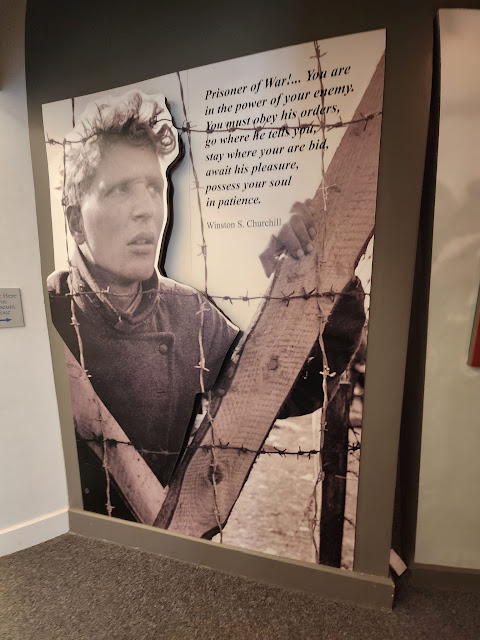



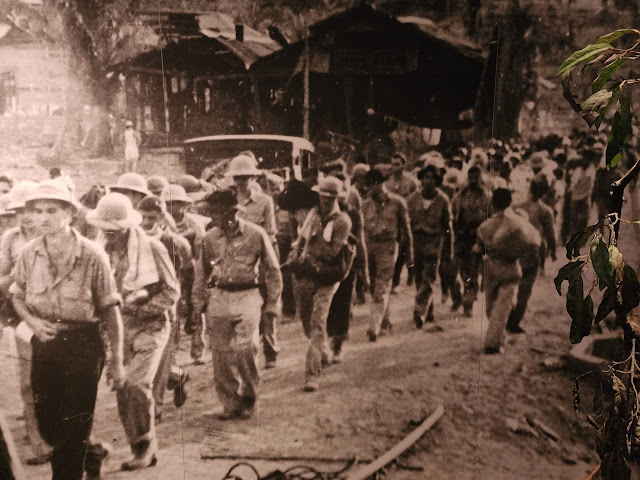






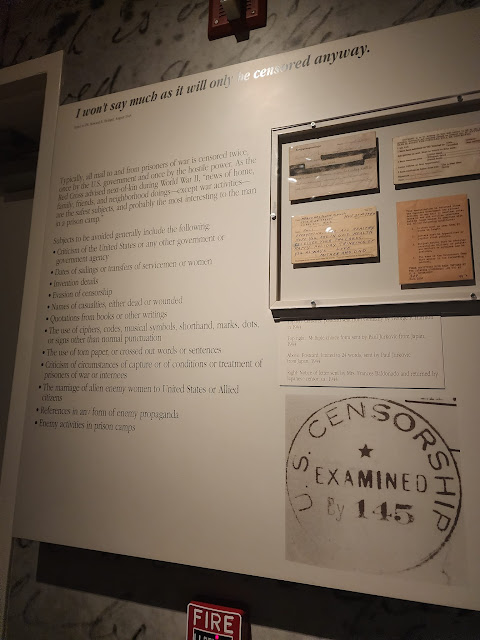












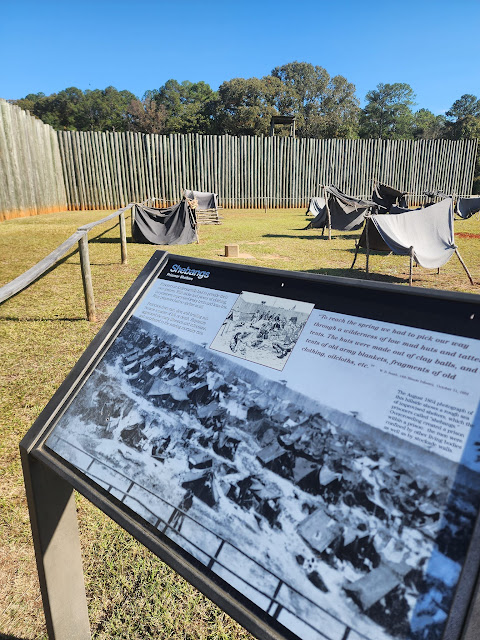














































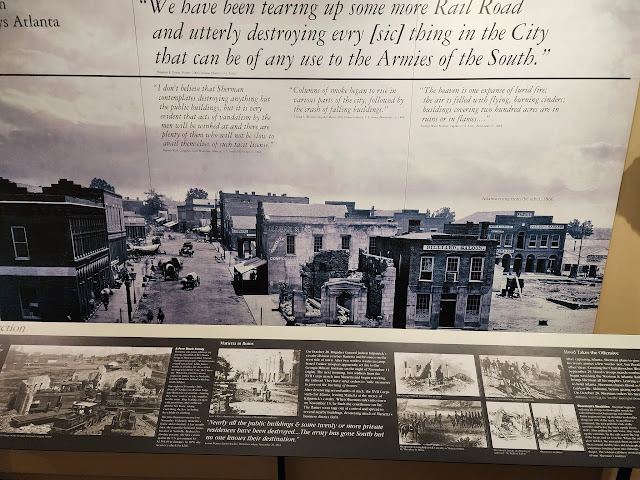

























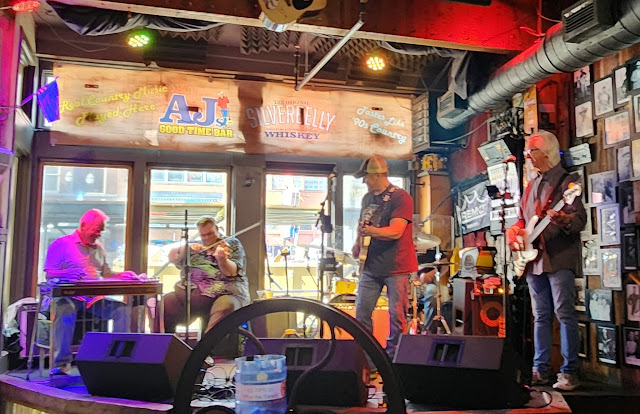


















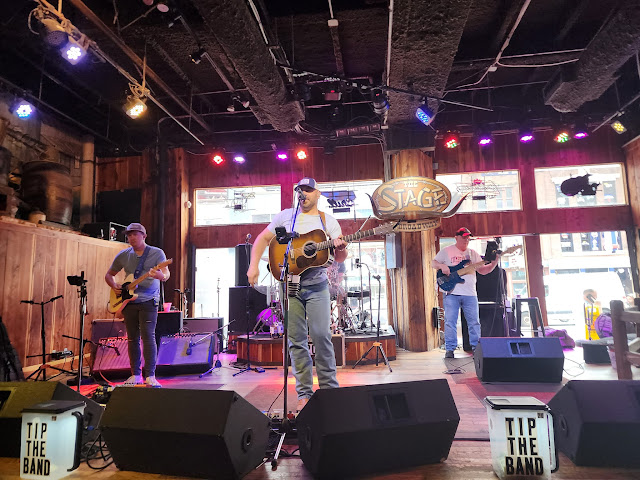












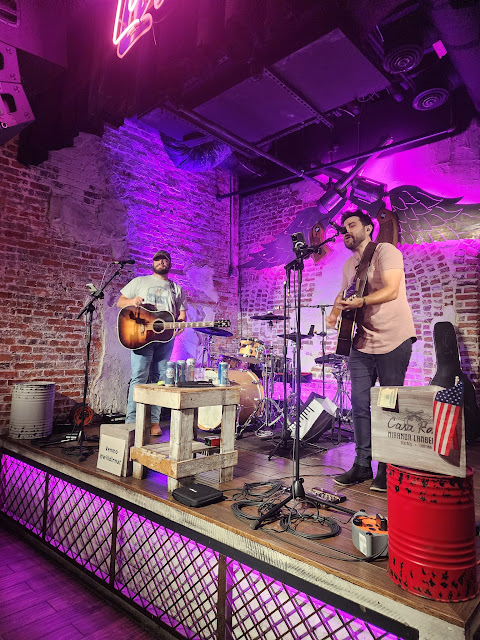


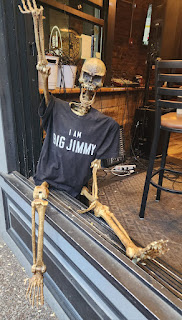
















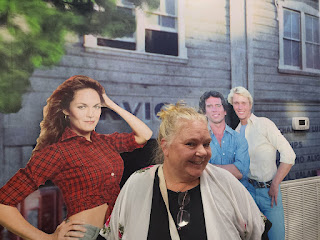








No comments:
Post a Comment